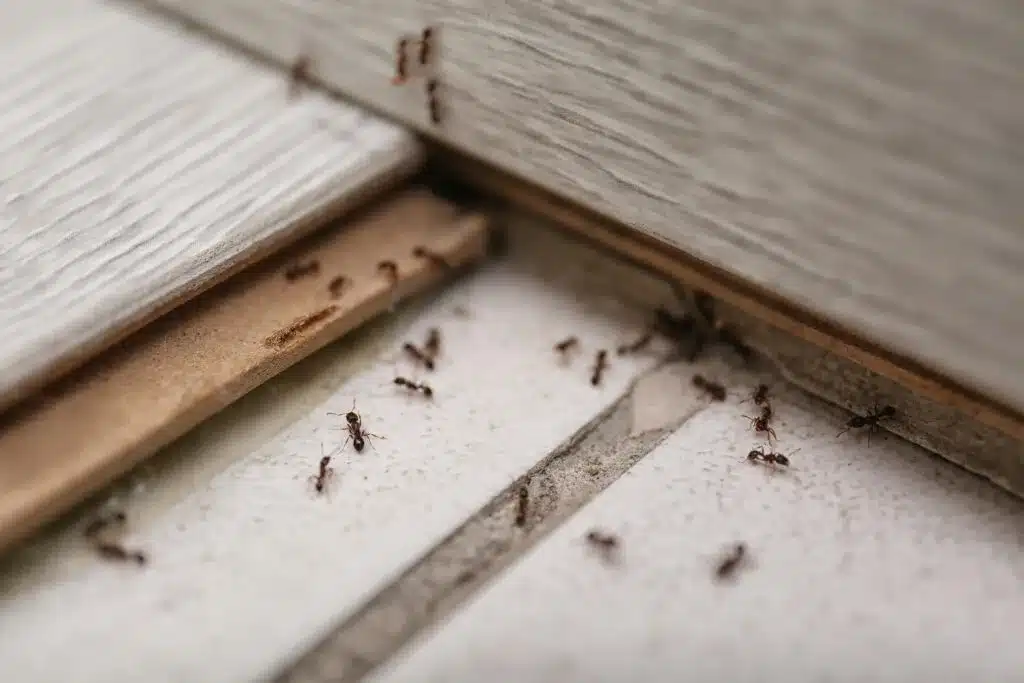While we all enjoy the warm months of the year, these months are also the time we are most bothered by unwanted house guests (and I’m not just talking about your in-laws). Ants can find their way into the tidiest of homes, and once they arrive, they’re hard to get rid of. For the worst infestations, the only solution is to call in professional exterminators. But for small colonies or mild problems, you should be able to take care of the ants yourself. Here are steps you can take to make your home a pest-free paradise.
1) Fill the cracks
Believe it or not, your home might not be as impregnable as you think. Even the smallest of cracks can serve as a doorway for ants. Consider arming yourself with a caulking gun and some high-quality caulk, then meticulously inspect your home for any cracks or gaps. These could be hiding in plain sight around areas like window sills, door frames, and entrances to your garage or crawl space. Make sure to pay special attention to the condition of your weather stripping on the doors, as worn-out seals can provide a convenient passage for ants.
While the task may seem daunting, there’s always professional help available. If you’re looking for a skilled hand to assist you in this task, we recommend The Smart Fix Handyman. Their team of experts can help ensure your home is as sealed and secure as possible, reducing the chances of any unwelcome insect guests making themselves at home.
2) Seal the food
Ants enter your home looking for one thing: food. The main type of ant found in residences is known as the odorous house ant, so called because of the smell it emits when crushed. These ants will scout through your home looking for anything edible, even the tiniest crumb.
The key is to seal and put away all sweet food, either in storage containers or sealed plastic bags. Even the sticky drips on the outside of a syrup or honey bottle can be attractants.
If you have pet food that pets need to access all day long, Better Homes & Garden suggests you fill a shallow bowl or tray with water and place the pet bowls in the middle; the water acts as a barrier the ants cannot penetrate.
3) Eliminate pheromone trails
Odorous house ant scouts leave pheromone trails behind them that allow other ants to follow their paths to the food. It’s not enough to kill the scouts; you have to eliminate those trails as well. Spray your countertops and hard floors with a 50/50 mixture of vinegar and water and allow it to air dry. Then watch and wait for more ants to appear, and keep track of their entry points.
4) Place ant bait
You can buy commercial ant bait from most grocery and hardware stores, but it’s just as easy to make your own. Diynatural.com says the best way to deal with odorous house ants is to put together a mixture of three parts powdered sugar and one part borax and putting a teaspoon or two in bottle lids directly in the ants’ path.
The powdered sugar attracts the ants, who then carry the mixture back to their nests — which means you must resist the temptation to kill every ant you see. The colony then consumes the bait and the borax kills the entire nest.
If you have pets or children in the house who might get into the bait, try dissolving it in warm water and then dipping cotton balls in it and placing them strategically around the house.
5) Utilize deterrents
Once you’ve eliminated your current infestation, you’ve got to place deterrents to prevent another one from cropping up. There are a plethora of options to choose from. Here are a few ideas:
- Cinnamon
- Baby powder
- Peppermint essential oil
- Mint extract
- Bay leaves
- Diatomaceous earth (food-grade)
Sprinkle your desired deterrent along possible ant entry points to your home and leave some on your counters and floors overnight (cleaning them up each morning). The exception is diatomaceous earth, which should only be applied directly to the ant nest if you can locate it, and not be left where children can have access to it.

